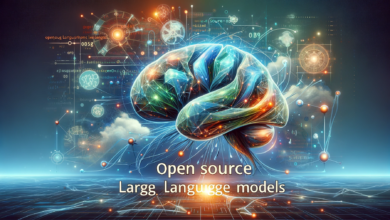Artificial Intelligence
Retrieval Augmented Generation (RAG): Harnessing external knowledge for smarter text generation

Retrieval Augmented Generation (RAG) is a powerful framework in Natural Language Processing (NLP) that combines the strengths of two different types of models: retrieval models and generative models. This hybrid approach aims to enhance the quality and factual accuracy of generated text.
Here’s a breakdown of how RAG works:
1. Retrieval Engine:
- This component searches for relevant information from external sources like knowledge bases, documents, or web data.
- Based on a given prompt or context, the retrieval engine identifies the most informative passages that are likely to be helpful for generating the desired text.
2. Generative Model:
- This component, often a large language model (LLM), uses the retrieved information as additional input to generate text.
- The LLM leverages its understanding of language and the retrieved facts to produce coherent, factually accurate, and consistent outputs.
Benefits of RAG:
- Increased factual accuracy: By grounding the generative model on real-world information, RAG reduces the risk of generating factually incorrect or misleading text.
- Improved coherence and relevance: The retrieved information ensures that the generated text stays relevant to the prompt and avoids nonsensical outputs.
- Knowledge base expansion: RAG allows the model to access and utilize a much broader range of information than its internal knowledge base, making it more versatile and adaptable.
Applications of RAG:
- Chatbots and virtual assistants: RAG can enhance the accuracy and informativeness of responses in chatbots, providing users with relevant information based on their queries.
- Question answering systems: RAG can improve the quality of answers by retrieving relevant supporting evidence from external sources.
- Content generation: RAG can be used to generate factually accurate and informative text for various applications, such as news articles, product descriptions, or summaries of complex topics.
Overall, Retrieval Augmented Generation is a promising NLP framework that holds the potential to significantly improve the quality and utility of generated text. Its ability to harness external knowledge makes it a valuable tool for various applications where factual accuracy and information richness are crucial.





